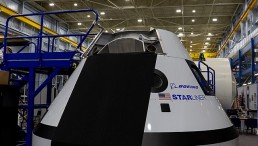Daryl Shane De Mesa
Pupil size shows reliability of decisions
World breakthrough: A new molecule allows for an increase in stem cell transplants
A second look at glaucoma surgery
Scientists find how mysterious 'circular RNA' is formed, claim muscular dystrophy link
Mouse model sheds light on role of mitochondria in neurodegenerative diseases
Don’t Believe In Climate Change? NOAA Says 2014 Brought Hottest Summer To Date
While Antarctica’s Seas Cool Down, The Arctic Ice Dwindles
UN Climate Summit 2014—What You Need to Know About the Events
A better way to track emerging cell therapies using MRIs
Even without kids, couples eat frequent family meals
Neurons express 'gloss' using three perceptual parameters
Graphene sensor tracks down cancer biomarkers
A refined approach to proteins at low resolution
Research predicts possible 6,800 new Ebola cases this month
Most Popular

Alexander the Great's Bathroom From 2,300 Years Ago Where Young Ruler Could Have Bathed With Companion Discovered by Archaeologists in Royal City of Aigai

Earth's Magnetic Field Nearly Collapsed 600 Million Years Ago, Sparking Evolution of More Complex Life

ESA Solar Orbiter Snaps Footage of Fluffy Plasma Structures of the Sun in Great Detail [WATCH]

Transparent Animals? These Weird Creatures Allow You To See Right Through Them

![Venus Lost Water and Dried Out Due to Chemical Reaction HCO+ Dissociative Recombination [Study]](https://1721181113.rsc.cdn77.org/data/thumbs/full/53493/258/146/50/40/venus-lost-water-and-dried-out-due-to-chemical-reaction-hco-dissociative-recombination-study.jpeg)



